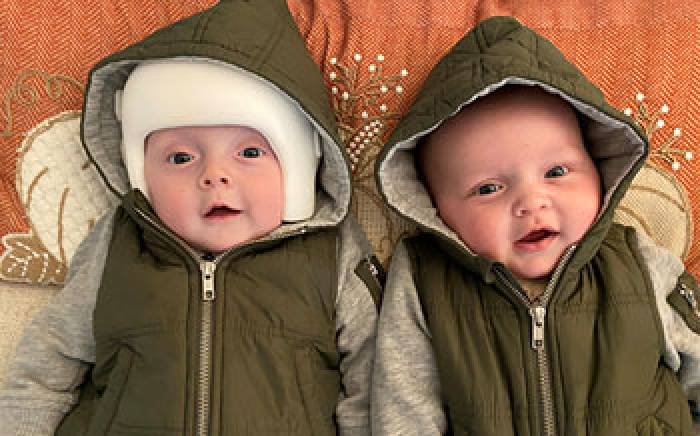If your baby has been diagnosed with craniosynostosis, you may have a lot of questions. At St. Louis Children's Hospital, we've been helping children who need craniosynostosis surgery for over 35 years, so we are prepared with answers to all of your questions. We have treated hundreds of children for all types of craniosynostosis. We can help your child, too.
What Is Craniosynostosis?
The skull may feel like one solid piece of bone, but it doesn't start out that way. The skulls of babies are made up of several bones with growth plates in between them connected by tissue called sutures. This allows the bones to move and expand as the brain grows.
Your baby's brain doubles in size during the first six months. If your baby is developing normally, none of the bones of the skull should fuse before he or she reaches about two years of age.
Some babies are born with bones of the skull that are abnormally fused. This makes the head look misshapen and may cause problems with brain development. When the skull bones fuse prematurely, the condition is called craniosynostosis.
It's important to note that craniosynostosis does not occur from leaving a baby lying on its back or side for long periods of time. That type of skull deformation is called deformational plagiocephaly and usually can be treated without surgery in our Deformational Plagiocephaly Clinic.
Why Choose St. Louis Children's Hospital for Craniosynostosis Repair?
Our center ranks among the most experienced in the nation at treating craniosynostosis. In fact, doctors from St. Louis Children's Hospital helped pioneer and refine minimally invasive endoscopic techniques for craniosynostosis repair. Here is why you should choose St. Louis Children's Hospital:
- Our re-operation rate is very low. In the hands of our experienced surgeons, craniosynostosis surgery not only is safe, but it's very successful.
- We put patient safety first. None of our patients has experienced a major surgical complication, such as stroke or heart attack. Safety is our primary concern.
- Our program is among the most experienced in the U.S. We have performed hundreds of craniosynostosis repair surgeries since 2003.
- We developed the standard protocol for post-surgery helmet use. The 'St. Louis protocol' for helmeting after craniosynostosis surgery is named for us because we developed it. This protocol is used by doctors and cranial orthotists throughout the country.
- We offer endoscopic repair for all types of craniosynostosis. Some surgeons only offer minimally invasive repair surgery to children with scaphocephaly (sagittal synostosis). Our experienced surgeons perform endoscopic repairs on all types of craniosynostosis, including multi-suture and syndromic cases. Learn more about endoscopic craniosynostosis repair.
- We believe in a multidisciplinary approach to craniosynostosis. Babies whose skull bones fuse too early may have other issues, too. When you choose St. Louis Children's Hospital, you will see professionals from all the appropriate subspecialties, including plastic surgery, neurosurgery, psychology, speech and language, dentistry, orthodontics, ophthalmology, nursing, ear-nose-throat and genetics.
- Streamlined appointments. On your first visit, you will get any necessary imaging done, receive the results and talk to the surgeons. We understand you don't want to take your baby from one clinic to another. We offer you everything you need in one place.
Types of Craniosynostosis We Treat
Our experienced surgeons treat all types of craniosynostosis. This includes:
- Sagittal synostosis (also called scaphocephaly)
- Coronal synostosis (unicoronal and bicoronal)
- Metopic synostosis
- Lambdoid craniosynostosis
- Minor suture synostosis
- Syndromic craniosynostosis that occurs due to another health condition, such as Crouzon syndrome and Apert syndrome
- Multi-suture craniosynostosis in which more than two bones of the skull fuse together prematurely
Contact Us
If you have concerns about your baby's head shape, give us a call at 314.454.5437 or toll-free at 800.678.5437. We will gladly evaluate the situation and refer you to the right type of care.




